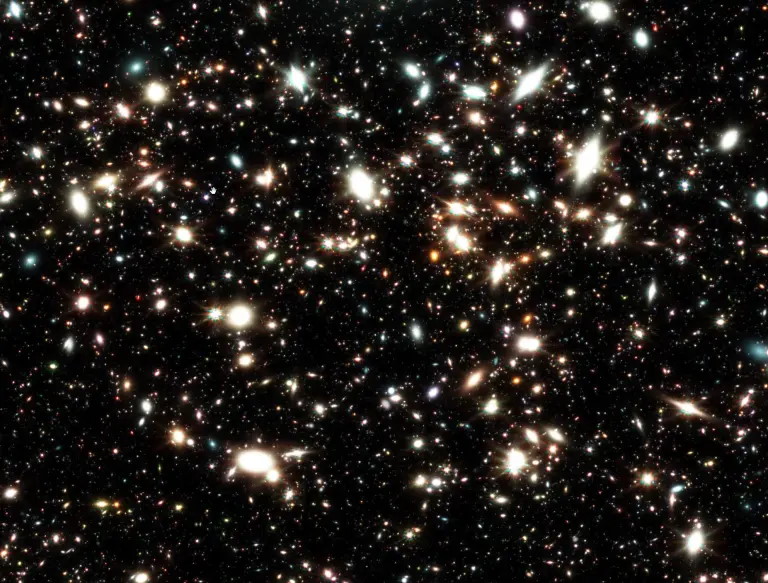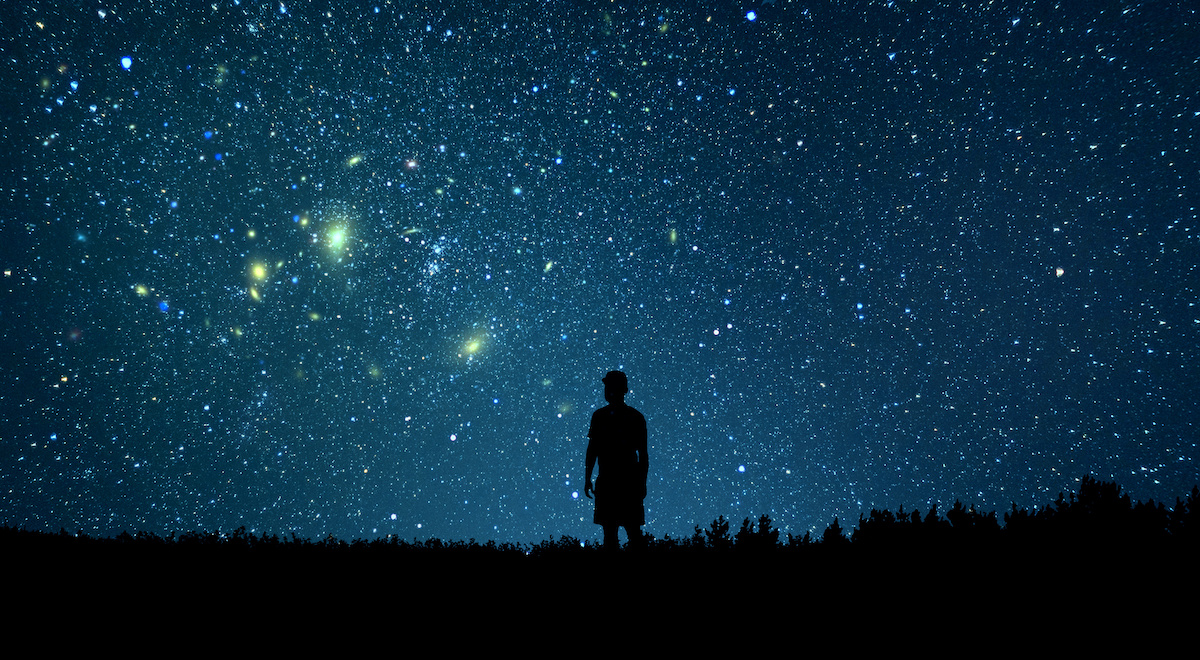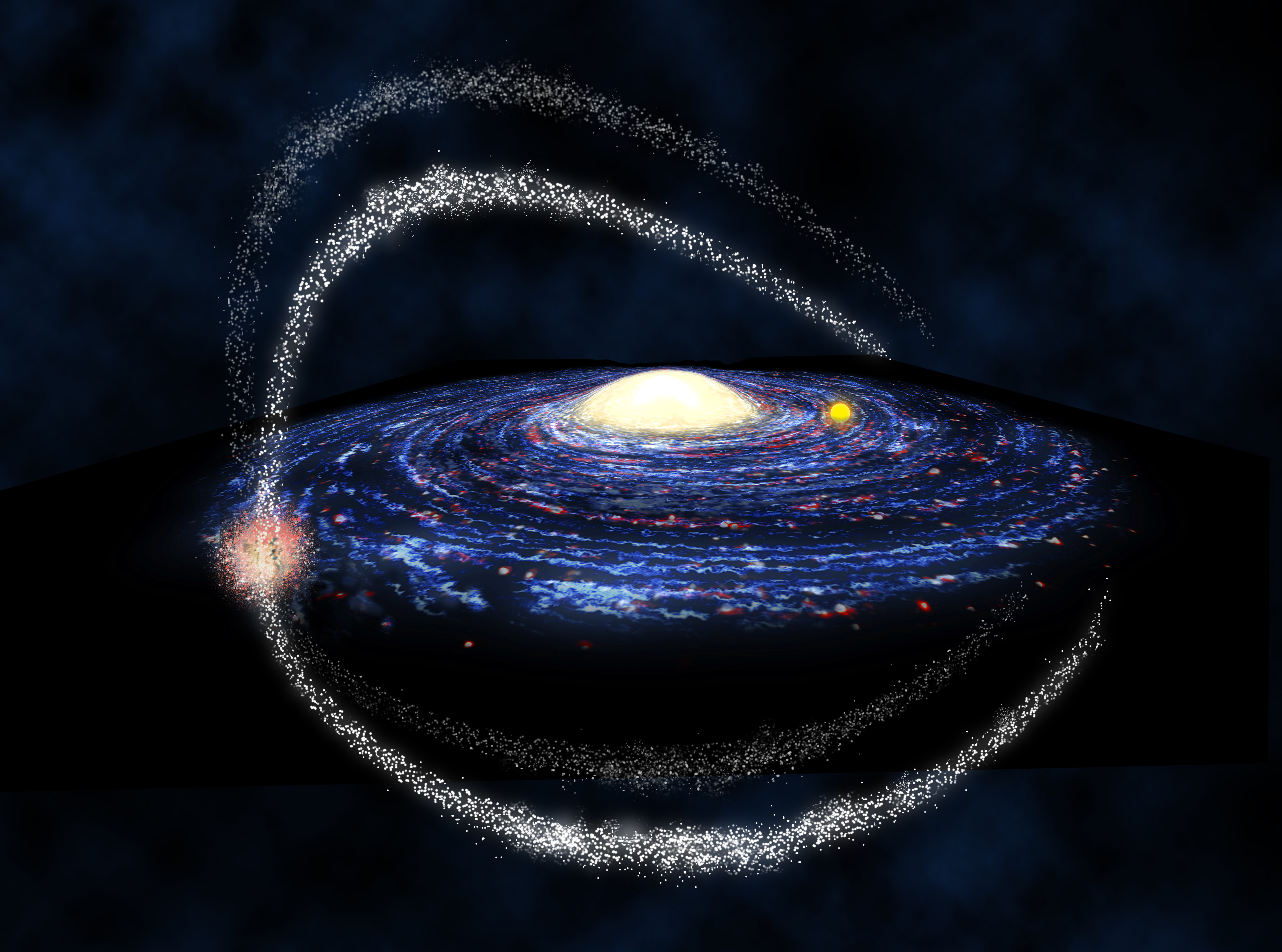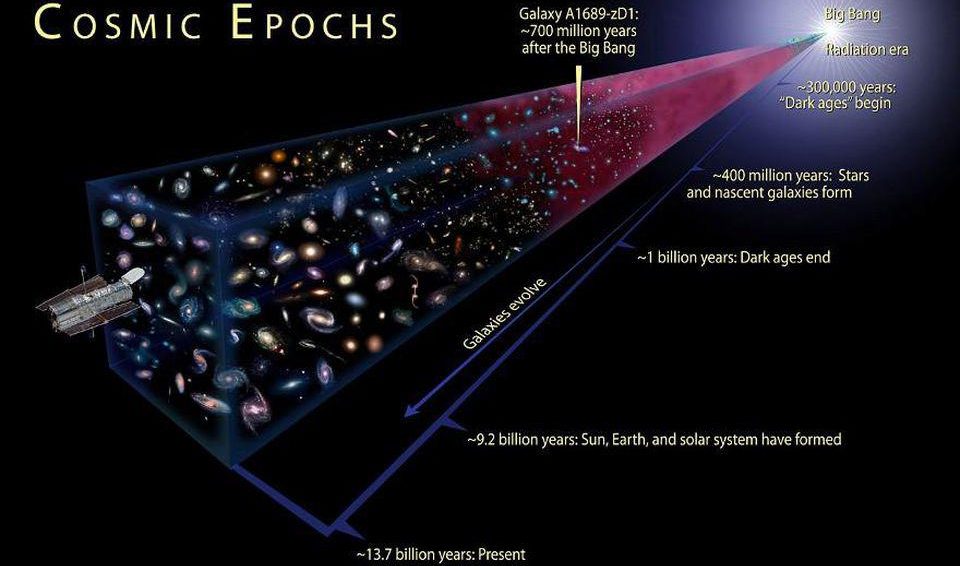Have we overestimated the number of stars in the Universe?
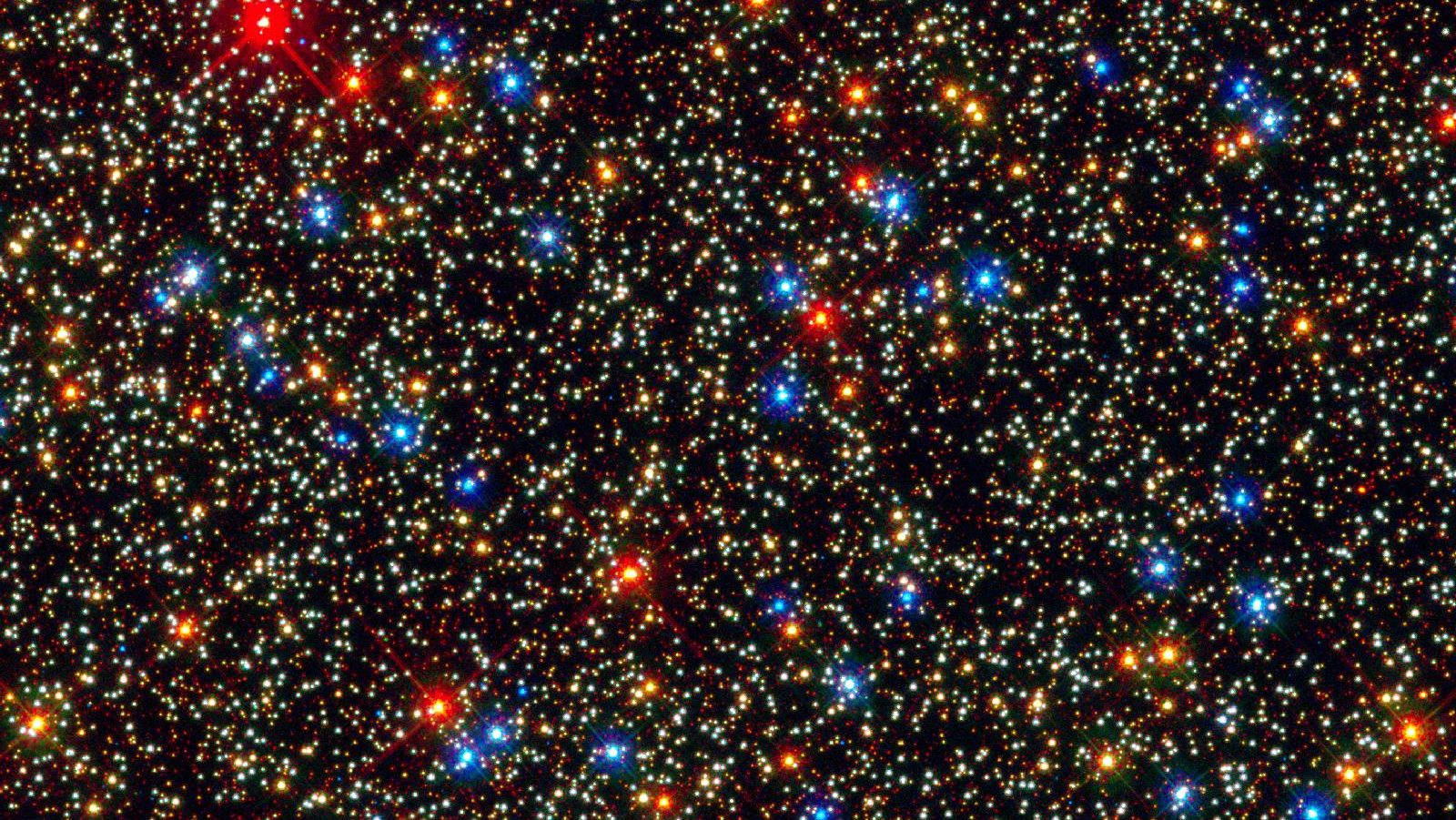
- If you look out at the entire observable Universe, 46.1 billion light-years in all directions, you’ll discover trillions of galaxies contained within it.
- The Milky Way galaxy, our home galaxy, contains a few hundred billion stars, so you might think that multiplying the stars in our galaxy by the number of galaxies in the Universe is a great way to estimate the number of stars, overall.
- But our galaxy isn’t typical, and neither, for that matter, is our Sun. Here’s how many stars are actually in the Universe, and what differences they have from our own.
No matter where we look in space, in any direction, we see that the Universe is filled with stars and galaxies absolutely everywhere. As far as stars go, on a clear, dark night, the naked human eye can see about 6000 of them, but that’s just a tiny fraction of all that’s out there. Our Milky Way galaxy, our cosmic home in the Universe, spans over 100,000 light-years in diameter and contains approximately 400 billion stars. Whereas about 20 years ago, we thought there were about 60 galaxies, total, in our Local Group — with one of them, Andromeda, containing even more stars than we do — we now know that there are likely hundreds of galaxies or more within our Local Group, with most of them being small, low-mass dwarf galaxies, containing fewer than 0.1% of the stars our Milky Way possesses.
If we look out across cosmic time and extrapolate what must be out there, based on both what we can see and what we know about the Universe that lies beyond our current capabilities to uncover, we find that there are a total of between 6 and 20 trillion galaxies in the Universe. Very simply, you might think to multiply the number of stars in our own galaxy by the number of galaxies in the Universe to estimate the total number of stars that we could potentially see. Only, if you do this, you won’t just get the wrong answer, you will overestimate the number of stars by a factor of many hundreds.
Don’t fret; even organizations as prestigious as the European Space Agency have made this mistake. Here’s how many stars are actually contained within the observable Universe, and how we can figure it out for ourselves.

The first thing you have to understand is why the most naive way you can attempt to calculate the stars in the Universe is insufficient. Your initial instinct is probably to say:
- we live in the Milky Way, in the here-and-now,
- and the Milky Way is a galaxy that contains stars,
- so we can count (or estimate) the number of stars in the Milky Way, as well as the number of galaxies in the observable Universe,
- and then multiply those two numbers together,
- and viola, the number of stars that are contained within the observable Universe.
But that method makes a number of assumptions that aren’t necessarily true. It assumes that the Milky Way is a good proxy for what the “average” galaxy in the Universe is like, when in fact, it is not. It assumes that the stars we see in the Milky Way represent a reasonable “average” for the stars we see in the Universe, when again, they are not. And it assumes that the galaxies we find billions of light-years away — galaxies that we’re seeing as they were billions of years in the past — have just as many stars as modern-day galaxies do today.
As it turns out, none of these assumptions are true. But fortunately, that doesn’t prevent us from being able to figure out precisely how many stars there are to look at, today, within the visible Universe.

When we think about the stars that have formed throughout the history of the Universe, there’s a lot to consider. Initially, at the start of the hot Big Bang, there were no stars at all: only the raw ingredients in the form of the subatomic particles that would eventually gravitate and collapse to form stars. This process isn’t fast; it requires the Universe to evolve in many ways. It has to form the atomic nuclei that will anchor the first atoms, something that occurs during the first few minutes of the Big Bang in a process known as Big Bang nucleosynthesis.
The Universe then has to cool sufficiently so that electrons can bind to these atomic nuclei, creating neutral atoms: a process that takes approximately 380,000 years.
Even after all that, the Universe is almost perfectly uniform; it was born with nearly the same density everywhere, with “overdense” and “underdense” regions only deviating from the cosmic average by a few parts in 100,000. It will take significantly more time — tens to hundreds of millions of years — for those overdense regions to grow enough to trigger the formation of the very first stars. And when that moment finally occurs, the stars that arise are nothing like the stars we see and know today.
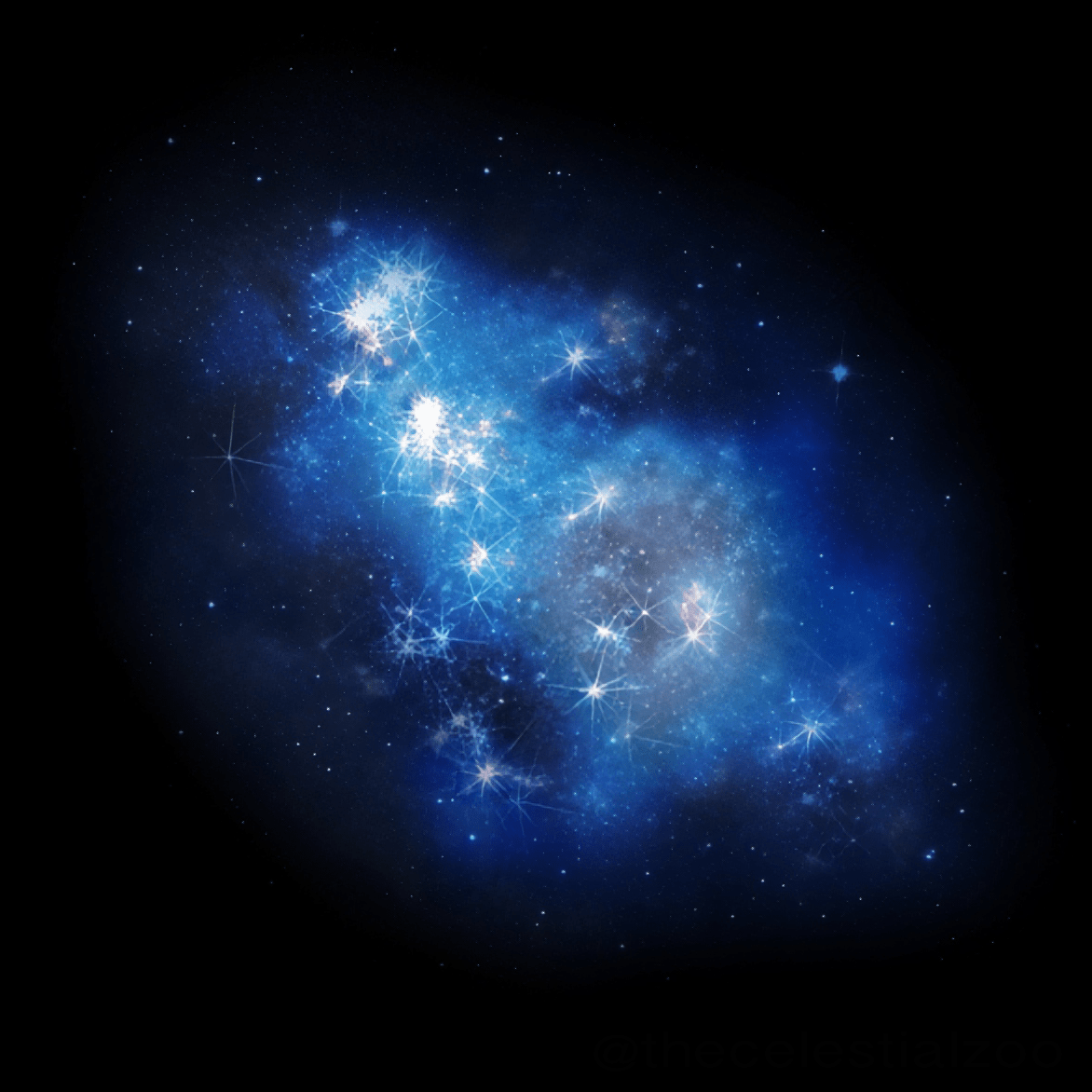
The first stars, you see, didn’t have significant quantities of heavy elements to help them form. Heavy elements, like carbon, oxygen, nitrogen, silicon, iron, and more, are the primary means by which collapsing clouds of gas can cool, radiating heat and energy away. But in the immediate aftermath of the hot Big Bang, there were no such elements: the Universe was almost exclusively composed of hydrogen and helium and their isotopes. In fact, 99.9999999% of the Universe’s atoms (by mass) were some form of hydrogen and helium, and that tiny leftover bit was exclusively lithium. (Although technically there was a tiny bit of beryllium formed in the first few minutes of the Universe’s history, all of those beryllium atoms were radioactive, and had decayed into lithium well before the first stars ever formed.)
Hydrogen and helium are terrible atoms, however, for transporting and radiating heat away. In fact, in this early environment, the best method a contracting cloud of gas would have for shedding its heat — an essential step in leading to the contraction of that gas, sufficiently, to form stars — is arguably through the occasional diatomic hydrogen molecule (H2), which is still tremendously inefficient compared to modern-day heavy elements.

As a result, the first stars that form require very large, massive gas clouds, and the masses of the stars that form are much greater than the typical stars we see today. Whereas the “average” star that forms today has a mass of about ~40% the Sun’s mass, the “average” mass of the first generation of stars has to be more like ten times the Sun’s mass, with many of them being 25 times as massive or even more upon their formation.
There’s a quote from the movie Blade Runner that always makes me think of massive stars, “The light that burns twice as bright burns half as long.” But for stars, the situation is even worse. If you have two stars made of identical “stuff” but one is twice as massive as the other, the more massive star will be approximately eight times as luminous and will live just one-eighth as long; brightness and lifetime seem to be related to the cube of the star’s mass. When we talk about a typical star from back then, one that’s ten times as massive as the Sun, we’re talking about something that shines a thousand times as bright, and something that lives only ~0.1% the duration of the Sun: only a few million years, rather than a few billion years. There are three reasons this is important.
- When we think about the very first generation of stars that form, we have to recognize that they’re extremely short-lived, and that none of these very first stars that formed more than 10 billion years ago are still around today.
- We also have to recognize that they’re fundamentally different from the stars that form later on: they have a very different initial mass function, or distribution of the number of stars of a given mass, from the stars that form afterward.
- But also, when we think about the first generation of stars, we have to realize that they are excellent at providing those first sets of heavy elements to their surroundings, and that the second generation of stars, which should form shortly after the first, will be very different from the first.
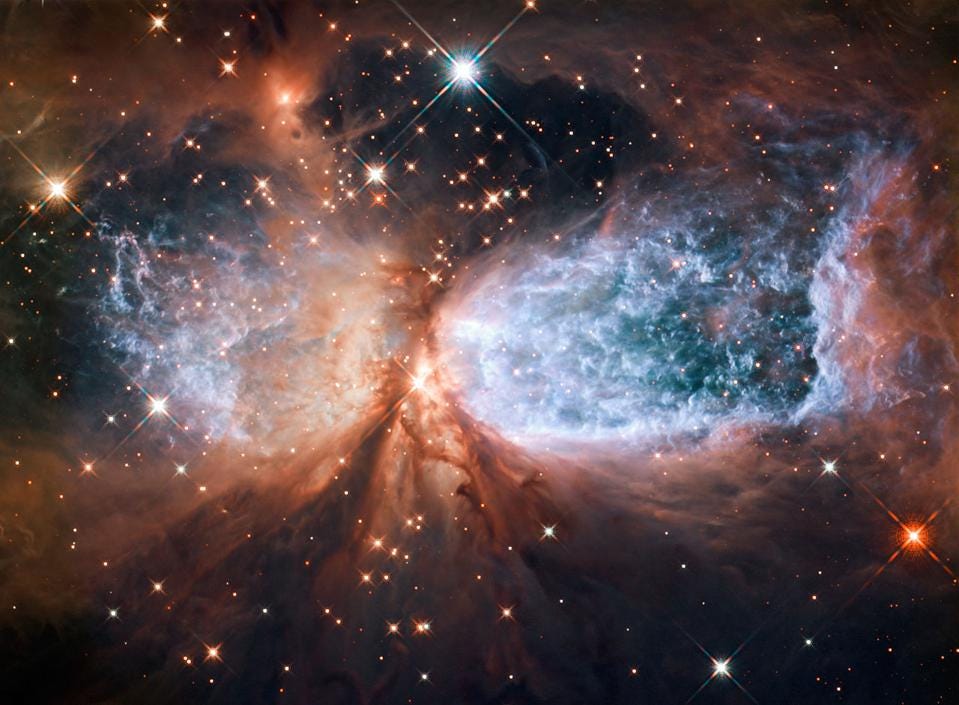
Once we start forming the second generation of stars, we actually have observational evidence to know what we’re talking about: many of these stars are still around today, and there are even some analogous regions — with very few heavy elements present within them — that are still forming stars today. The earliest stars that form in the most distant galaxies haven’t been directly discovered yet, although the James Webb Space Telescope is taking us tantalizingly close in just its first ~14 months of science operations, but we have excellent measurements of how the Universe has formed subsequent generations of stars dating back throughout the history of the Universe. Everywhere we look, in all directions and locations, wherever we can see stars and galaxies, we can measure the star-formation rate inside.
One of the remarkable, but largely unheralded, advances in astronomy and astrophysics in recent years has been the development of a comprehensive understanding of how star-formation has progressed throughout the history of the Universe. For a very long time, we had very little information about whether star-formation had increased or decreased over our cosmic history, and what that meant for the total number of stars in the Universe.
No more! During the 2000s and 2010s, this once-obscure field of science came tremendously into focus, and a landmark review paper, first published in 2014, at last allowed us to uncover the star-formation history of the Universe, over time, from the present day all the way back to a time when the Universe was only ~650 million years old, or just ~5% its current age.
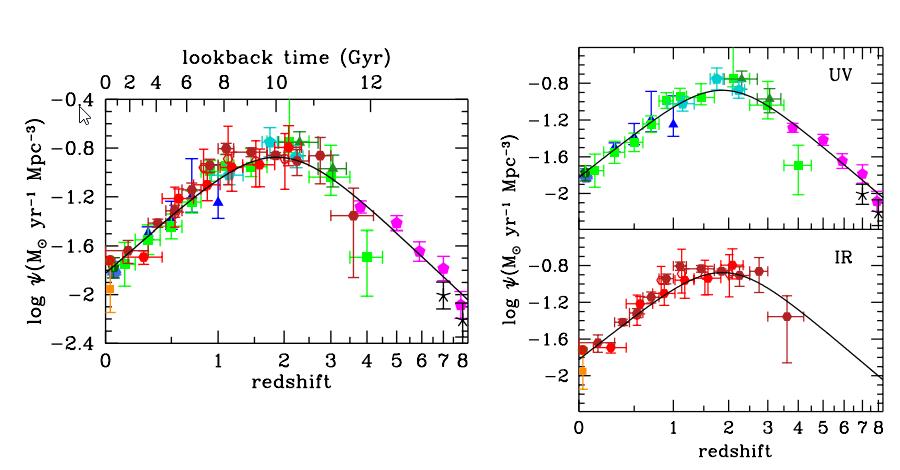
While there remains some great uncertainty concerning those first ~650 million years or so (although the early JWST results are swiftly narrowing them down), there’s some excellent news for those of us wanting to know the number of stars in the modern Universe.
- First, far fewer than 1% of the total stars to form in the Universe formed during that early time, otherwise the neutral atoms in the Universe’s intergalactic medium would have become reionized far earlier than we observe that event to occur: ~550 million years after the Big Bang.
- Second, once the amount of heavy elements in the Universe reaches about 1-part-in-1000 of what it’s measured to be in our Sun, we can be quite confident that the initial mass function of stars that form — remember, that’s how the stars that form are distributed as a function of number and mass — are relatively the same to how they are today over cosmic time.
- And third, if we want to know how many stars exist, today, then all we have to do is sum up the total number of stars that formed over the history of the Universe, and then subtract out the fraction of stars that ought to have completed their life cycles by the present day: i.e., subtract out the stars that have already died.
In other words, if we know the star-formation rate throughout history, and we know that rate well-enough to account for the formation of ~99% of the stars that have ever been formed, and we understand how stellar life-and-death works, we can calculate how many stars that formed over our entire cosmic history are still alive today.
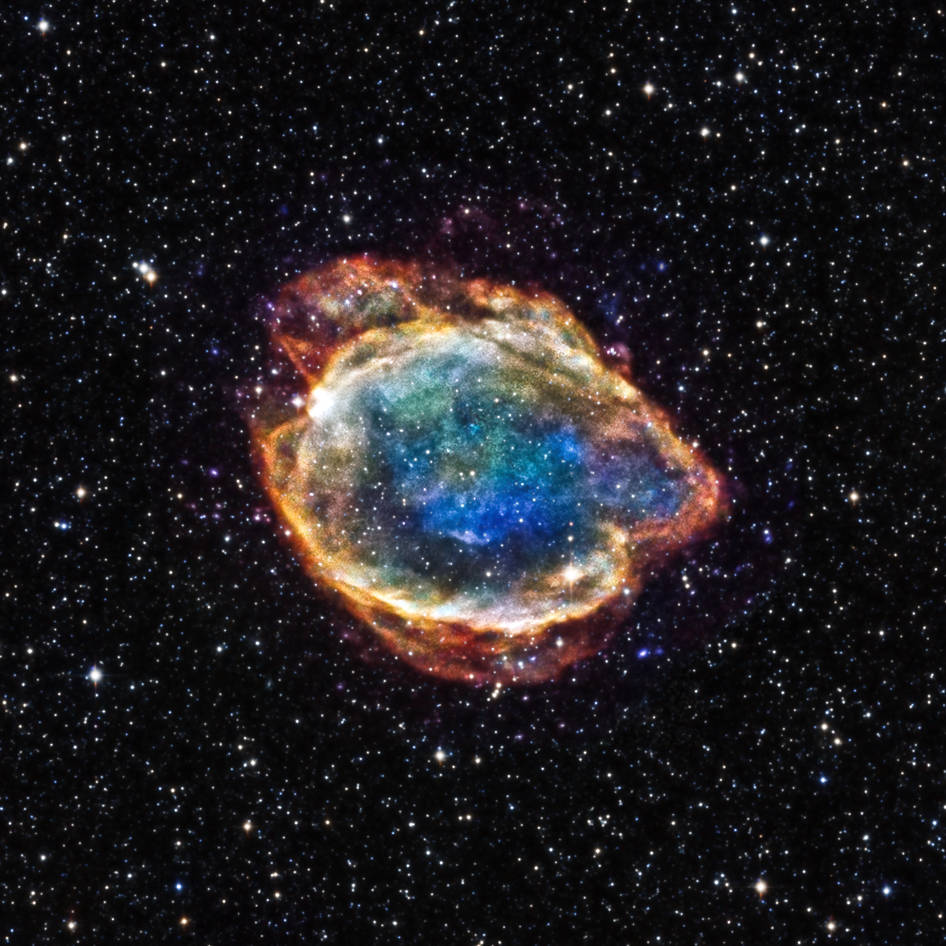
There are then two answers to the question of “How many stars are in the Universe?” The answer you get depends, of course, on what you mean by the question you’re asking. Do you mean:
- How many stars exist in the observable Universe today? That is, if you could draw an imaginary sphere around our location in space, one that extends for 46.1 billion light-years in all directions (the size of the visible Universe), and measure all the stars within them that exist, today, 13.8 billion years after the Big Bang, how many stars would you have?
- Or, alternatively, how many stars are presently observable, if we had infinite telescopic power, sensitivity, and wavelength coverage, from our perspective, at present? That is, if we look at all the stars and galaxies as we see them today, with the light that’s arriving at our eyes from all over the Universe right at this very moment, how many stars would we see?
The answers to these two questions are different, and different by perhaps more than you might intuit. Remember: looking back at what we can observe, we’re seeing things as they are in the past, whereas if we calculate what exists at present, 13.8 billion years after the Big Bang, we have to mentally “fast-forward” everything we see by a greater amount the farther away it is, as we’re seeing it as it was longer ago in the cosmic past.

The first question — about stars that exist within the observable Universe today — is easier to answer, as it only requires us to add up, numerically, all of the stars that have cumulatively formed over the Universe’s history, and subtract out the (small) percentage of stars that have died. Since our Sun, which has a total lifetime of 10-to-12 billion years, is more massive and shorter-lived than 95% of the stars in our Universe, we’d only be off by ~5%, at most, if we assumed that every star ever born was still alive.
If you make that assumption, a straightforward calculation teaches us that there would be a total of 2.21 sextillion (or 2.21 × 1021) stars in the Universe. This is a lot: about one billion stars for each of the ~2 trillion galaxies estimated to be in our Universe, but a factor of hundreds-to-thousands lower than the answer you’d get by multiplying the number of stars in the Milky Way by the number of galaxies in the Universe.
The Milky Way is a larger, significantly more massive-than-average galaxy, just like the Sun is larger and more massive than ~95% of the stars that exist. If you account for stellar death, you’d find that we presently have about 2.14 sextillion stars in the Universe, today, 13.8 billion years after the Big Bang. If you instead looked at the Universe when it was younger, you’d find that we had:
- 98% of our current stars form by the time we were 12.9 billion years old,
- 75% by the time we were 7.3 billion years old,
- 50% by the time we were 4.9 billion years old,
- 25% by the time we were 3.3 billion years old,
- 10% by the time we were 2.2 billion years old,
- 5% at 1.7 billion years,
- 1% at 1.0 billion years,
- 0.1% at about 500 million years,
- and only 0.01% at about ~200 million years.
Today, the star-formation rate is a shadow of what it once was: just 3% of its maximum, which it reached more than 10 billion years ago.

But what if you wanted to know how many stars were in the Universe that you could see, right now, with infinite observing power and no restrictions? Remember that in this Universe, as you look away to greater and greater distances, you’re also looking progressively farther back in time. When you look back to a galaxy that you’re seeing as it was 6.5 billion years ago, you’re only going to see ~75% of the stars you’d find in a comparable galaxy today. That corresponds to a distance of a little over 8 billion light-years away. But in terms of the volume of the Universe that you can see, remember it’s a three-dimensional Universe, and if we can see back ~46 billion light-years in all directions, looking back to a distance of ~8 billion light-years only encompasses 0.5% of the volume that spans the full, observable Universe.
When one performs that calculation, you’ll find that we can only see about 8 × 1019 stars from our perspective: about 4% of the total stars that exist within our observable Universe, today, 13.8 billion years after the Big Bang. Even more emphatically, that number is only ~0.001% (or one hundred-thousandth) of the (incorrect) number of stars you’d estimate were in our Universe if you multiplied the number of stars in the Milky Way by the total number of galaxies in the observable Universe.
While there are still a large number of things to discover about the earliest stars and galaxies in the Universe, we already know the story of most of them. Although these are all enormous numbers, they’re finite, and there are fewer stars that we can observe than almost anyone realizes. Enjoy the sights that we have, because most of the Universe is not only out of reach, it’s beyond our ability to even view for ourselves.
